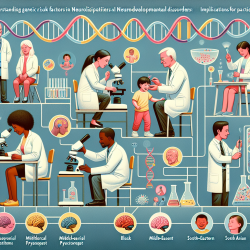Introduction
The intersection of maternal stress, substance use, and child development is a complex area that demands our attention, particularly for practitioners working with children. The research article titled "Introduction to the Special Issue on 'Informing Longitudinal Studies on the Effects of Maternal Stress and Substance Use on Child Development: Planning for the HEALthy Brain and Child Development (HBCD) Study'" provides a comprehensive framework that can significantly enhance our understanding and approach to child development.
Understanding the HBCD Study
The HEALthy Brain and Child Development (HBCD) study is a groundbreaking initiative aimed at understanding how various factors, including maternal stress and substance use, impact child development. This study plans to follow a large cohort of pregnant women and their children over a decade, focusing on neurodevelopmental trajectories and the effects of high-risk environments.
Key components of the study include:
- Data collection on pregnancy and fetal development.
- Infant and early childhood brain imaging.
- Assessments of social, emotional, and cognitive development.
Implications for Practitioners
For practitioners, the findings and methodologies of the HBCD study offer valuable insights into improving child outcomes. Here are some ways practitioners can leverage this research:
1. Emphasize Early Intervention
The study highlights the importance of early intervention in mitigating the adverse effects of prenatal substance exposure. Practitioners should prioritize early assessments and interventions to support optimal development.
2. Integrate Multi-Modal Assessments
Utilizing a combination of neuroimaging, biospecimen collection, and behavioral assessments can provide a holistic view of a child's development. This approach can help identify at-risk children and tailor interventions accordingly.
3. Culturally Sensitive Practices
The study underscores the need for culturally sensitive practices, particularly when working with diverse populations. Practitioners should engage with families in a culturally respectful manner to build trust and improve outcomes.
Encouraging Further Research
The HBCD study sets the stage for further research into the complex interplay of genetic, environmental, and social factors in child development. Practitioners are encouraged to stay informed about ongoing research and consider participating in studies that align with their practice.
For those interested in delving deeper into the research, the original article provides a wealth of information and can be accessed here: Introduction to the Special Issue on “Informing Longitudinal Studies on the Effects of Maternal Stress and Substance Use on Child Development: Planning for the HEALthy Brain and Child Development (HBCD) Study”.
Conclusion
The insights from the HBCD study are invaluable for practitioners committed to enhancing child development outcomes. By integrating these research findings into practice, we can make data-driven decisions that support the well-being and resilience of children in diverse environments.










